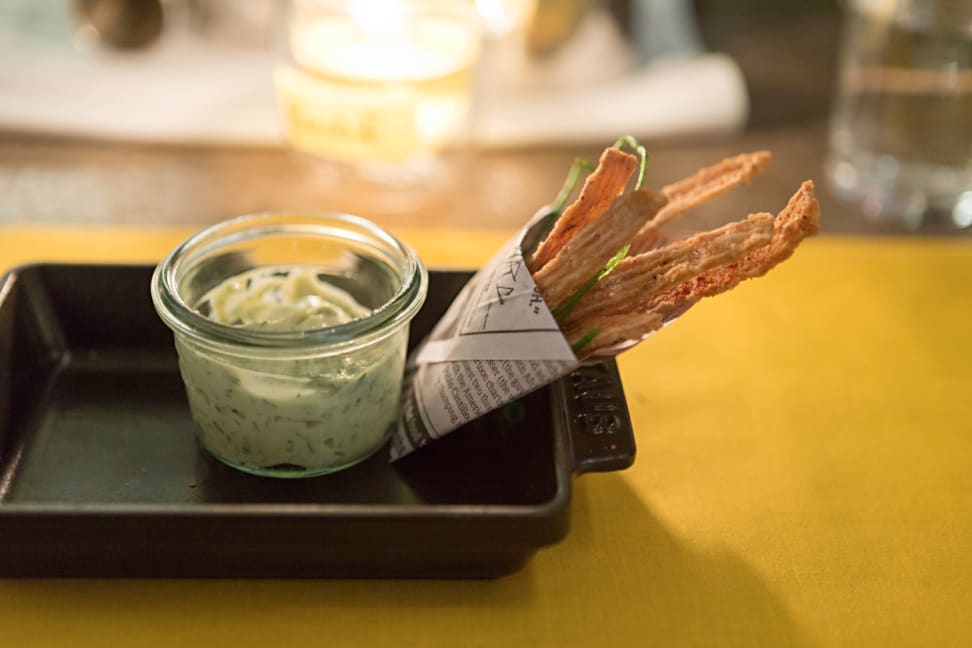Let Them Eat Waste: Chefs Turn Trash Into Haute Cuisine
For two weeks, a NYC restaurant served garbage to rave reviews.
 Credit:
wastED
Credit:
wastED
Products are chosen independently by our editors. Purchases made through our links may earn us a commission.
Does your soul die a little every time you throw away unused food? Mine does. Maybe that feeling comes from growing up near Johannesburg, where the phrase "there are children starving in Africa" was more of an uncomfortable reminder of fact than a motivational sermon at dinner time.
Food waste is a growing concern in the restaurant, supermarket, and supply chain industries. From technological solutions to educational campaigns, food producers and sellers are looking for ways to use more of what we're already growing. But last month, one popular New York City restaurant tried a different tack: It changed its menu to exclusively offer food that would otherwise be thrown away.
For two weeks in March, Greenwich Village's Blue Hill restaurant was renamed wastED, and served items like fried skate cartilage, a juice pulp burger, and a dumpster diver's vegetable salad. Each dish was tailor-made to raise awareness regarding food waste.

The pop-up restaurant was short lived.
A 2013 study by the Food Waste Alliance determined that the average restaurant generates 33 pounds of food waste for every $1,000 in revenue, and of that waste only 15.7% is donated or recycled. The remainder—a whopping 84.3%—is simply thrown out.
Putting aside the high environmental and social cost of growing, shipping, and then discarding that much food, it's just bad business; restaurants and supermarkets are buying more food than they can sell. Restaurants like Silo in the UK have experimented with zero-waste systems, but wastED took the concept to its logical conclusion.

The panna cotta includes left over rice from saké fermentation barrels.
It should be noted than none of the items on wastED's menu was technically made from garbage (worry not, squeamish eaters). Instead all the ingredients used are examples of meat cuts and produce that most restaurants would never consider serving. Things like kale ribs, fish collars, vegetable pulp, rejected sweet potatoes, and cucumber butts were all re-appropriated and, with the help of a number of renowned chefs, turned into gourmet cuisine.
While the idea of eating food typically regarded as trash isn't exactly appetizing, culinary history is littered with examples of "garbage cuts" that were turned into haute cuisine. After all, lobster was once deemed suitable only for feeding prisoners, and pork belly's recent meteoric rise is due largely to its high flavor-to-cost ratio. Many of the hottest restaurants in the U.S. are adding offal to their menus, and more chefs are working with blood.
Though wastED received rave reviews, it was designed from the start as a short-lived experiment; Blue Hill has since returned to its regular menu. Nevertheless, it serves as a reminder that there are many ways to address problems of sustainability, and that you can make an amazing meal out of virtually anything.
Related Video
{{brightcove '4149592517001'}}
